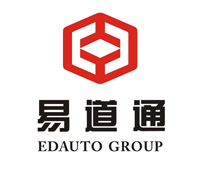Global market boom: the rise of new energy vehicles in China
In recent years, the performance of Chinese new energy vehicles in the global market has been amazing, especially in Southeast Asia, Europe and South America, where consumers are enthusiastic about Chinese brands. In Thailand and Singapore, consumers queue up overnight to buy a Chinese new energy vehicle; in Europe, BYD’s sales in April surpassed Tesla for the first time, showing strong market competitiveness; and in Brazil, Chinese brand car sales stores are crowded with people, and hot-selling scenes are frequently seen.
According to the China Association of Automobile Manufacturers, China’s exports of new energy vehicles will reach 1.203 million in 2023, a year-on-year increase of 77.6%. It is expected that this number will further increase to 1.284 million in 2024, an increase of 6.7%. Fu Bingfeng, executive vice president and secretary general of the China Association of Automobile Manufacturers, said that China’s new energy vehicles have grown from nothing to something, from small to large, and have successfully transformed their first-mover advantage into an industry leading advantage, promoting the global development of intelligent networked new energy vehicles.
Multi-dimensional drive: resonance of technology, policy and market
The hot sales of Chinese new energy vehicles overseas are not accidental, but the result of the combined effect of multiple factors. First, Chinese automakers have achieved breakthroughs in core technologies, especially in the field of plug-in hybrid vehicles, and sales have continued to rise. Second, Chinese new energy vehicles are extremely cost-effective, thanks to the world’s largest new energy vehicle industry chain, and the cost of parts has been greatly reduced. In addition, Chinese automakers’ technological accumulation in the field of new energy vehicles far exceeds that of foreign competitors, making Chinese brands continue to sell well in overseas markets, and sales have even surpassed traditional auto giants such as Toyota and Volkswagen.
Policy support is also an important factor in promoting the overseas export of Chinese new energy vehicles. In 2024, the Ministry of Commerce and nine other departments jointly issued the “Opinions on Supporting the Healthy Development of New Energy Vehicle Trade Cooperation”, which provided multi-dimensional support for the new energy vehicle industry, including improving international business capabilities, improving the international logistics system, and strengthening financial support. The implementation of these policies has provided strong guarantees for the overseas export of Chinese new energy vehicles.
Strategic upgrade from “product export” to “localized manufacturing”
As market demand continues to grow, the way Chinese automakers go overseas is also quietly changing. From the past product-oriented trade model, it has gradually shifted to localized production and joint ventures. Changan Automobile has established its first overseas new energy vehicle factory in Thailand, and BYD’s passenger car factory in Cambodia is about to start production. In addition, Yutong will start its first overseas new energy commercial vehicle factory in December 2024, marking that Chinese automakers are deepening their layout in the global market.
In terms of brand building and marketing models, Chinese automakers are also actively exploring localization strategies. Through its flexible business model, Xpeng Motors has quickly covered more than 90% of the European market and won the sales champion in the mid-to-high-end pure electric vehicle market. At the same time, parts manufacturers and service providers have also begun their overseas journey. CATL, Honeycomb Energy and other companies have built factories overseas, and charging pile manufacturers are also actively deploying local services.
Zhang Yongwei, vice chairman of the China Electric Vehicle 100 Association, said that in the future, Chinese automakers need to place more production in the market, cooperate with local companies in joint ventures, and realize a new model of “you have me, I have you” to promote the international development of new energy vehicles. 2025 will be a key year for the “new international development” of China’s new energy vehicles, and automakers need to use advanced manufacturing and products to serve the global market.
In short, China’s new energy vehicle overseas expansion is entering a golden period. With the multi-dimensional resonance of technology, policy and market, Chinese car companies will continue to write new chapters in the global market.
Email:edautogroup@hotmail.com
Phone / WhatsApp:+8613299020000
Post time: Jul-09-2025



